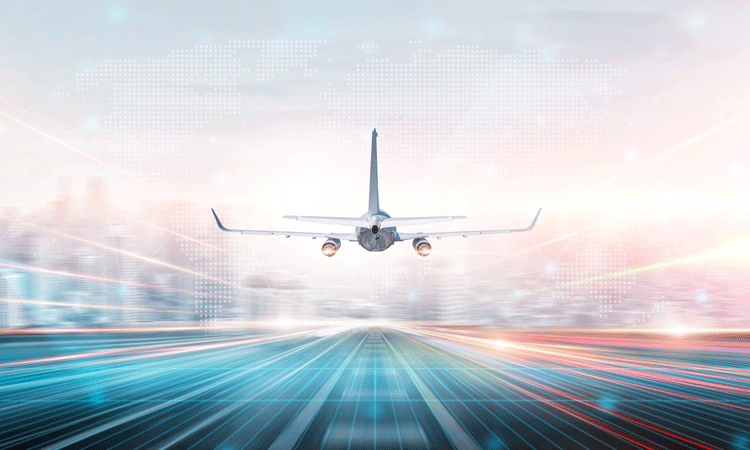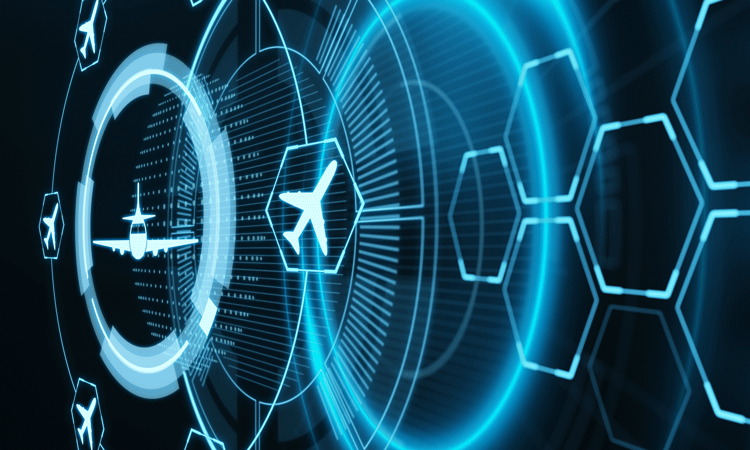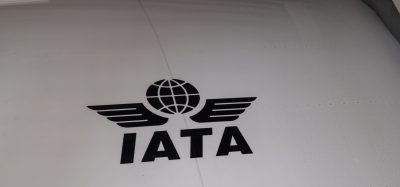Innovative airport network and security systems launched at Oman exhibition
- Like
- Digg
- Del
- Tumblr
- VKontakte
- Buffer
- Love This
- Odnoklassniki
- Meneame
- Blogger
- Amazon
- Yahoo Mail
- Gmail
- AOL
- Newsvine
- HackerNews
- Evernote
- MySpace
- Mail.ru
- Viadeo
- Line
- Comments
- Yummly
- SMS
- Viber
- Telegram
- Subscribe
- Skype
- Facebook Messenger
- Kakao
- LiveJournal
- Yammer
- Edgar
- Fintel
- Mix
- Instapaper
- Copy Link
Posted: 12 December 2023 | Huawei | No comments yet
Huawei, leading global supplier of information and communication technology infrastructure, launched several impressive new fibre-optic solutions for the aviation industry at the recent Airports Innovate Exhibition in Muscat, Oman.


As airports worldwide become busier and their technology becomes more advanced, there is an urgent need to expand their internal communication networks to ensure seamless operations and facilitate interaction among various systems. Check-in, baggage handling, air traffic control, customs and immigration all have their own, specific needs and are usually siloed, but, for optimum efficiency, they also need to communicate with one another.
To help airport owners meet this enormous challenge, leading global ICT (Information and Communication Technologies) infrastructure provider Huawei launched its latest Fully Connected Fibre Network Solution at the recent Airports Innovate Exhibition in Muscat, Oman.


Moussa Huang, Director of International Market Development of Huawei’s Aviation & Rail business unit at Airports Innovate event in Oman. Credit: Huawei.
“Our vision is to support our customers to build fully connected networks to connect all their systems and people,” explained Moussa Huang, Director of International Market Development of Huawei’s Aviation & Rail business unit.
This improved technology supports at least three of the five factors highlighted by the Airports Council International (ACI) as shaping the next generation of airports:
- The race to achieve net zero
- Technological innovation
- Inter-modal connectivity
- A changing workforce
- The passenger experience revolution.
The new Huawei Fully Connected Fibre Network Solution is certainly a technological innovation, and the much-improved connectivity both supports the changing workforce and enhances the passenger experience. It will also assist with inter-modal connectivity, as the various transport operators’ systems can communicate with ease, and the network has 10 times higher bandwidth, greatly reducing both power consumption per Gbit/s of traffic and overall electricity consumption by 30% on average.
Converged bearer with one network
To achieve its impressive performance, Huawei’s Fully Connected Fibre Network Solution is a converged network. This consolidates a large number of components (servers, storage devices, infrastructure management software and automation tools) into one, optimised package. The result is centralised management of all infrastructure resources, which in turn reduces cost and increases resource utilisation.
The converged bearer enables multiple systems to run on the same optical network without interference, ensuring reliable transmission and the stable running of airport services. The network delivers seamless network access anytime and anywhere, requires 60% fewer wired information points, makes video conferences smooth, and improves collaboration efficiency by 30%.
In the Fully Connected Fibre Network Solution, active devices are replaced with passive ones, using optical access technology. Passive devices do not consume power, this means they save energy, are less of a fire risk and more reliable than active devices. The simplified two-layer architecture delivers higher reliability while the network management system, which is based on Huawei’s iMaster NCE (Network Control Engine) facilitates rapid service planning and improves intelligent operation and maintenance (O&M) efficiency. In operation, some 85 per cent of faults are self-healing and 95 per cent of faults can be analysed using big data, improving O&M efficiency by 68 per cent.
The use of Artificial Intelligence (AI), the Internet of Things (IoT), and big data is becoming more widespread as the aviation industry adopts new digital technologies. As it does so, the demand for more and more bandwidth, and higher and higher transfer speeds, is increasing rapidly.
As stand-alone airports increasingly become members of airport-owning groups, the demands on networks are increasing as systems have to communicate between airports, often across international boundaries. Cloud-based systems are increasingly used for data transfer, making security as well as transfer speeds and bandwidth a high priority.
Huawei’s Fully Connected Fibre Network Solution can adapt to these changes in demand. “To build the smart airport or the future airport, you need, first of all, to connect everything and everybody,” Moussa Huang stated. “The whole airport network needs to be reliable, to be simple, and also to be easy to manage. So, we simplified the whole architecture of the network in the airport. We improved the efficiency and the management of the whole network, for reliability.”


Perimeter security
One of the systems that places a big demand on airport networks in terms of both bandwidth and reliability is perimeter security. Traditional systems such as CCTV are being enhanced as video analysis is now undertaken by artificial intelligence, fibre-optic cables ‘listen’ for the sound of people and vehicles in areas where they should not be, and sensors monitor fence and perimeter integrity.
Huawei introduced its Perimeter Security with Fibre Sensing Solution at the Airports Innovate Exhibition, alongside the launch of its Fully Connected Fibre Network Solution. Based on distributed fibre-optic sensing, the Smart Airport Perimeter Security with Fibre Sensing Solution can accurately detect perimeter intrusions in all weathers.
“We have been working in the optical area for over 20 years,” Moussa Huang said. “So, we can detect tiny vibrations in the fibre. If it is wind and rain, we delete the signal so it cannot cause false alarms and we will not miss any intrusion alarms.”
Optical cables can specifically identify vibrations caused by wind and rain. It comprehensively detects perimeter intrusions in all weathers and covers long distances, ensuring near-zero missed alarms and reducing the number of false alarms to no more than one per kilometre each day, a reduction in the false alarm rate of more than 90 per cent when compared with traditional airport perimeter security solutions.
The front-end optical cables are passive, and one set of fibre sensing devices can cover a 10km (six mile) perimeter. When an alarm is triggered, its location can be pinpointed within 5.5 metres, greatly facilitating a rapid response by security teams.
All of these features – distinguishing between the effects of wind and rain and an actual perimeter breach, few false alarms and the accurate identification of an alarm location – help contribute to higher intelligent protection levels, all-round airport operational security, and improved staff experience.
In the cloud
Cloud management is increasingly important for airports to deal with the increase in data. Flexibility and scalability are key characteristics of cloud services, and important for the changes of airports.
Tailored for the aviation industry, basic services such as computing, storage, network, security, and disaster recovery services can be powered by Huawei’s Airport Cloud Solution.
Data assets accumulated in the airport digital foundation cover areas ranging from data models and service indicators of airport operation control, security, travel service, business, management, and energy services, which enables the unified data services for different purpose.
With various innovative solutions already delivered to 130 airports in 40 countries and regions, Huawei is well-placed to manage cloud and other communications technologies worldwide.
It was shown through an Intelligent Operations Centre (IOC). “The IOC is like the brain, monitoring and controlling the whole area,” Moussa Huang explained. “In the future, the airport will become like a city, with cargo operations and shopping malls. Huawei will focus on the ICT infrastructure, providing a fully connected network and the airport cloud to enable all of these different solutions.”
Another way Huawei can improve airport operations is through the use of artificial intelligence (AI) for functions such as stand allocation. Currently undertaken manually, AI will, in the future, allocate stands to arriving aircraft having used machine learning to adopt and adapt current methods.
Moussa Huang understands that an efficient network’s biggest enemy can be its own complexity. “First, you need a blueprint – a roadmap,” he said. This is very important and defines how to build the system step by step. It should have unified architecture, to guarantee all the different projects don’t get out of control. And you need to build from the bottom to the top.
“ICT infrastructure is like a highway,” he added. “If there is no road, how can you run the vehicles? Applications are like the vehicles, so first you need a reliable and robust foundation – like the road – and then you can add the applications (vehicles).”
So, is that Huawei’s vision of the future?
“In the future, the airport should, first of all, be fully connected. It should use different networking technologies to connect all the different entities and people,” Moussa Huang explained.
“Secondly, it has to be intelligent, using a digital airport cloud. It will have different platforms, such as AI platforms, communication platforms and IoT platforms, which can support the applications and enable them to be intelligent. So, that’s also changed the model from the silo system building model to the platform building model.
That’s the future of the digitally connected airport.”
Related topics
Artificial intelligence (AI), Big data, Data, Digital transformation, Information technology (IT), New technologies, Security


















